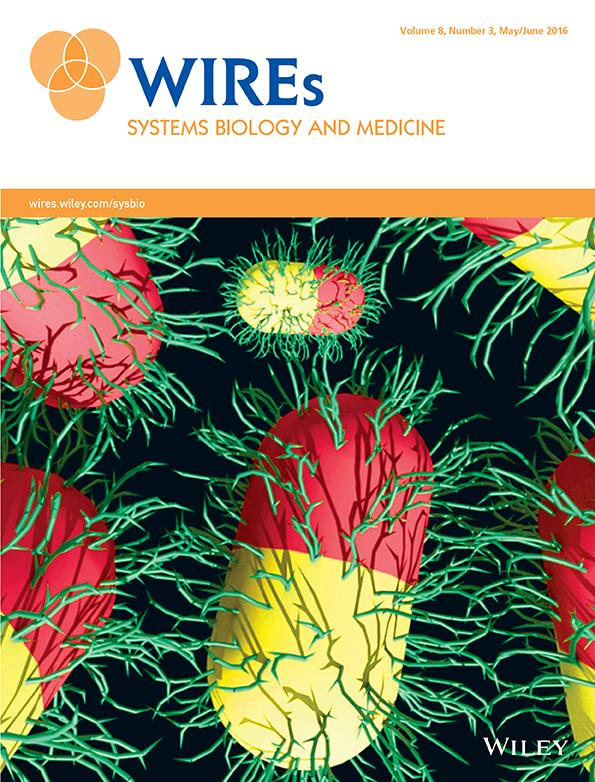Recent lab‐on‐chip developments for novel drug discovery
IF 7.9
Q1 Medicine
Wiley Interdisciplinary Reviews-Systems Biology and Medicine
Pub Date : 2017-07-01
DOI:10.1002/wsbm.1381
引用次数: 60
Abstract
Microelectromechanical systems (MEMS) and micro total analysis systems (μTAS) revolutionized the biochemical and electronic industries, and this miniaturization process became a key driver for many markets. Now, it is a driving force for innovations in life sciences, diagnostics, analytical sciences, and chemistry, which are called ‘lab‐on‐a‐chip, (LOC)’ devices. The use of these devices allows the development of fast, portable, and easy‐to‐use systems with a high level of functional integration for applications such as point‐of‐care diagnostics, forensics, the analysis of biomolecules, environmental or food analysis, and drug development. In this review, we report on the latest developments in fabrication methods and production methodologies to tailor LOC devices. A brief overview of scale‐up strategies is also presented together with their potential applications in drug delivery and discovery. The impact of LOC devices on drug development and discovery has been extensively reviewed in the past. The current research focuses on fast and accurate detection of genomics, cell mutations and analysis, drug delivery, and discovery. The current research also differentiates the LOC devices into new terminology of microengineering, like organ‐on‐a‐chip, stem cells‐on‐a‐chip, human‐on‐a‐chip, and body‐on‐a‐chip. Key challenges will be the transfer of fabricated LOC devices from lab‐scale to industrial large‐scale production. Moreover, extensive toxicological studies are needed to justify the use of microfabricated drug delivery vehicles in biological systems. It will also be challenging to transfer the in vitro findings to suitable and promising in vivo models. WIREs Syst Biol Med 2017, 9:e1381. doi: 10.1002/wsbm.1381新药物研发的最新芯片实验室进展
微机电系统(MEMS)和微总量分析系统(μTAS)彻底改变了生化和电子工业,这种小型化过程成为许多市场的关键驱动力。现在,它是生命科学、诊断、分析科学和化学领域创新的推动力,这些领域被称为“芯片实验室”(lab - on - a - chip)设备。这些设备的使用允许开发快速,便携式和易于使用的系统,具有高水平的功能集成,可用于点护理诊断,法医,生物分子分析,环境或食品分析以及药物开发等应用。在这篇综述中,我们报告了定制LOC器件的制造方法和生产方法的最新进展。简要概述了扩大规模的策略,并介绍了它们在药物输送和发现中的潜在应用。在过去,LOC装置对药物开发和发现的影响已被广泛审查。目前的研究重点是基因组学的快速准确检测、细胞突变和分析、药物传递和发现。目前的研究还将LOC设备区分为微工程的新术语,如器官芯片、干细胞芯片、人体芯片和身体芯片。关键的挑战将是将制造的LOC器件从实验室规模转移到工业大规模生产。此外,需要进行广泛的毒理学研究,以证明在生物系统中使用微制造药物递送载体是合理的。将体外研究结果转化为合适且有前景的体内模型也将具有挑战性。中国生物医学工程学报,2017,32(1):444 - 444。doi: 10.1002 / wsbm.1381
本文章由计算机程序翻译,如有差异,请以英文原文为准。
求助全文
约1分钟内获得全文
求助全文
来源期刊

Wiley Interdisciplinary Reviews-Systems Biology and Medicine
MEDICINE, RESEARCH & EXPERIMENTAL-
CiteScore
18.40
自引率
0.00%
发文量
0
审稿时长
>12 weeks
期刊介绍:
Journal Name:Wiley Interdisciplinary Reviews-Systems Biology and Medicine
Focus:
Strong interdisciplinary focus
Serves as an encyclopedic reference for systems biology research
Conceptual Framework:
Systems biology asserts the study of organisms as hierarchical systems or networks
Individual biological components interact in complex ways within these systems
Article Coverage:
Discusses biology, methods, and models
Spans systems from a few molecules to whole species
Topical Coverage:
Developmental Biology
Physiology
Biological Mechanisms
Models of Systems, Properties, and Processes
Laboratory Methods and Technologies
Translational, Genomic, and Systems Medicine
 求助内容:
求助内容: 应助结果提醒方式:
应助结果提醒方式:


